As the 2024–2025 financial year draws to a close, employers across Australia must turn their focus to essential end-of-financial-year (EOFY) preparations. Beyond the financials, now is the time to ensure your HR compliance obligations are met and to strategically plan for the financial year ahead.
Here’s a checklist of critical EOFY considerations for employers in 2025:
- Modern Award and Minimum Wage Increases (Effective 1 July 2025)
On 3 June 2025, the Fair Work Commission determined to increase the National Minimum Wage and Award rates by 3.5%, effective from 1 July 2025. This increase will impact all employees covered by modern awards and the National Minimum Wage.
What you need to do:
- Review employee classifications under applicable modern awards.
- If necessary, update pay rates and allowances in your payroll system.
- Communicate changes clearly to affected employees.
- If you remunerate your employees on an annualised salary arrangement, check the pay rate to ensure that it is still suitable.
- If you remunerate your employees on over-award pay rates in compensation for various award entitlements, check that the pay rate to ensure that it is still suitable.
Failing to comply with minimum wage increases can lead to underpayment claims and reputational damage.
- Superannuation Guarantee Increase
From 1 July 2025, the Superannuation Guarantee (SG) rate will increase from 11.5% to 12%.
What you need to do:
- Update payroll systems to reflect the new superannuation rate
- Ensure that any total remuneration packages (TRPs) account for the change
- Re-issue contracts or variations to contract letters if superannuation is paid on top of base salary and budgets need adjusting
- Communicate to employees to manage expectations
- HR Compliance & Workplace Risk Management
Now is the ideal time to audit HR practices and allocate budget for critical compliance initiatives. Key areas of focus include:
Bullying, Harassment, and Positive Duty Compliance
The Respect@Work reforms place a positive duty on employers to take proactive steps to eliminate workplace sexual harassment and related conduct.
Suggested Actions:
- Conduct or update your workplace audit, risk and response plans
- Deliver training for leaders and staff on respectful behaviours and legal obligations
- Review and strengthen workplace policies and reporting procedures
- Include initiatives for the prevention of bullying, harassment, sexual harassment and psychosocial hazards in your 2025 budget
Psychosocial Hazard Management
Employers must now proactively identify and control psychosocial hazards and risks in the workplace.
EOFY is a great time to:
- Review your current approach to managing psychosocial hazards – this may include carrying out a psychosocial hazard audit and risk assessment if this is something you have not undertaken.
- Implement a structured psychosocial hazards response plan and/or employee wellbeing strategy
- Budget for leadership development to ensure all leaders in your organisation are aware of their role to play in managing psychosocial hazards and building psychologically safe teams
- Workforce Budgeting and Planning for FY 2025–26
EOFY isn’t just about compliance; it is also your chance to plan strategically.
HR budgeting areas to consider:
- Salary reviews to ensure you are remaining competitive and that your remuneration packages reflect employees’ contributions.
- Learning and development initiatives
- Internal capability building (e.g. performance, leadership)
- Wellbeing, inclusion, or employee engagement programs
- External HR support for compliance, investigations, mediation or special projects
- Performance & Development Reviews and Performance Goal Setting
The end of the financial year is also an ideal time to conduct mid-year performance and development reviews. This process provides an opportunity for meaningful one-on-one check-ins between managers and team members to reflect on individual progress, give and receive constructive feedback, and realign on goals for the remainder of the year. It’s essential to ensure every employee has a clear and purposeful development plan in place, tailored to their strengths, aspirations, and areas for growth.
These development goals may include training, coaching, or upskilling opportunities that require budget allocation, so it’s important they are considered as part of workforce and financial planning for the year ahead. A well-executed mid-year review cycle supports continuous improvement, strengthens engagement, and helps retain high-performing talent.
Things to consider for mid-year performance and development reviews:
- Schedule and conduct meaningful one-on-one check-ins with all team members to review progress, challenges, and achievements.
- Provide and invite constructive feedback to support continuous improvement and strengthen working relationships.
- Update or create individual development plans that align with employee goals and business needs.
- Identify and factor in any budget implications for development activities such as training, coaching, or upskilling.
- Document outcomes and set clear priorities for the second half of the year, ensuring alignment with strategic objectives.
- Audit, Report and Reset for a Strong Start
Use EOFY as a checkpoint to measure HR performance and identify improvement opportunities:
- Conduct a HR health check or compliance audit
- Review KPIs in your People & Culture Strategy
- Revisit your organisational structure and workforce plan to ensure alignment with business goals
- Reward, Recognise and Connect with your Team
The EOFY is also a valuable opportunity to pause and recognise your team. As the halfway point of the calendar year, it’s the perfect time to celebrate achievements, thank your people for their efforts, and bring the team together through a well-planned team-building or social activity. Whether it’s a casual lunch, an off-site event, a team building workshop or a formal update session, it’s a great moment to reconnect your workforce to the business’ vision and purpose. Sharing how the organisation is tracking against its strategic goals reinforces alignment, builds engagement, and reminds your team that their contribution matters.
June 2025

